A pre-1940s-residential building situated in Harvard University’s campus is being renovated to inspire others on how old and conservative design can be altered to create an ultra-efficient facility with ambitious performance targets. The building, which is to be completed in the spring of 2018, will house The Harvard Center for Green Buildings and Cities’ headquarters, and be a first-of-its-kind test case to demonstrate unprecedented levels of building efficiency and promote substantial shifts in the design and operation of existing buildings.

HouseZero consists of the original structure and an extension to the existing building in a subterrain called the vault. The current conventional heating and cooling systems in the house, including a gas-powered boiler, hot water heater, steam driven radiators, forced-air ventilation, and window-mounted air conditioning units will be fully replaced with the addition of thermal mass, including radiant surfaces, as well as natural ventilation inside both the existing house and the vault. Rather than approaching the project as a hermetically-controlled box, the envelope and materials of HouseZero are designed to interact with seasons and the exterior environment in a more natural way. Much like a layered approach to clothing, the house is meant to adjust seasonally.
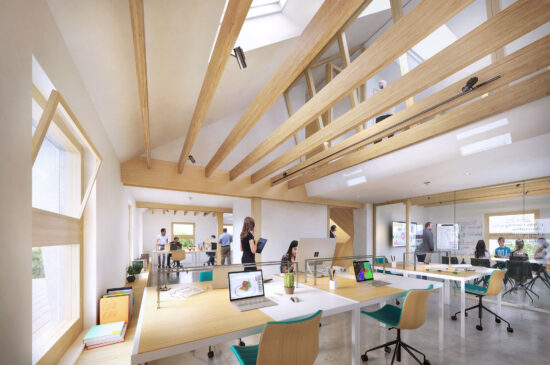
All glazing systems in the house will be replaced with triple-glazed, low-E windows and skylights, which will be fully operable through WindowMaster’s automated system, NV Advance®. WindowMaster’s control system will allow the building to fully monitor the temperature, humidity, and air quality through internal and external sensors. Manual overrides of the automated system are also incorporated.
The zero-energy natural ventilation strategy is attuned to seasonal and climatic variables through adaptive installations, some passive and some with algorithm-based control technologies. Ventilation is controlled via WindowMaster’s actuated windows on all floors, while a passive solar chimney contributes to critical ventilation of the vault and the event space in the basement. Operable skylights are added to the roof plane to allow for a robust ventilation of the second and third floors as well as the stairwell. Furthermore, windows will let in air at select times to manage the indoor air quality during the winter. In the summer, the windows located at the higher-level will be utilized to keep the temperature in the building at the required level throughout the day. All openings are programmed for daily night purging to help stabilize indoor air quality throughout the seasons.
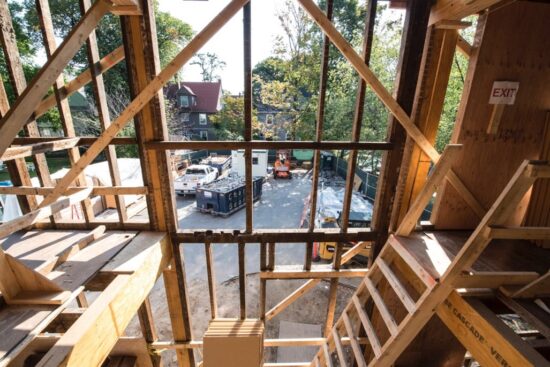
The Natural Ventilation Strategy
Natural ventilation is provided through automated façade windows, supplemented with automated skylights. The event space and the vault have the highest internal loads, and therefore will be coupled with the passive solar chimney to provide additional robustness to the natural ventilation strategy.
HouseZero has twenty-three climate zones with sensors detecting temperature, CO2, and humidity in each zone and a weather station on the roof. There is a total of fifty-two actuators installed on the skylights and bottom hung windows.
In the winter season, thermally driven single sided ventilation will be enough to supply the minimum air flow rate necessary for optimum air quality and temperature. In the spring, autumn, and moderate summer when outside temperatures are below the cooling set-point temperature, higher airflow rates are demanded to temperate the building. Natural ventilation will then rely on a combination of cross ventilation and thermal driven air flow rates through the skylights and solar chimney.
In the summer, with high outdoor temperatures (above ~77 °F / 25 °C), the radiant cooling surfaces (floor) in the building will temperate the house and the air flow rate will be restricted to achieve acceptable air quality. Moderate cross ventilation in combination with thermally driven air flow through the skylights and solar chimney will be sufficient to achieve the desired ventilation rates.
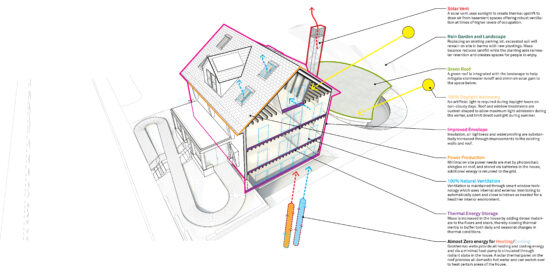
Before now, this level of efficiency could only be achieved in new construction. We want to demonstrate what’s possible, show how this can be replicated almost anywhere, and solve one of the world’s biggest energy problems – inefficient existing buildings.
Ali Malkawi, Professor of Architectural Technology at the GSD, Founding Director of the Harvard Center for Green Buildings and Cities, and the creator of the HouseZero project (source: www.harvardcgbc.org, May 24th, 2017)
The Solar Chimney
The event space in the basement of the house and the vault both will frequently have a high occupancy load which would result in a higher demand for air flow rates than the rest of the house. In addition, both areas are partially below grade giving more unsecure conditions for cross ventilation through window openings. A solar chimney is therefore added as an opening to improve to the natural ventilation strategy for those two spaces.
Intelligent Window Automation with MotorLink®
All window actuators supplied by WindowMaster are equipped with MotorLink®. The MotorLink software allows for millimeter-by-millimeter position control and feedback, three-speed operation, genuine synchronization, pressure safety function, online parameter set-up, and reverse function, which enables the pressure on the window gaskets to be released. This software provides efficient control on all window actuators creating an optimal naturally ventilated building.
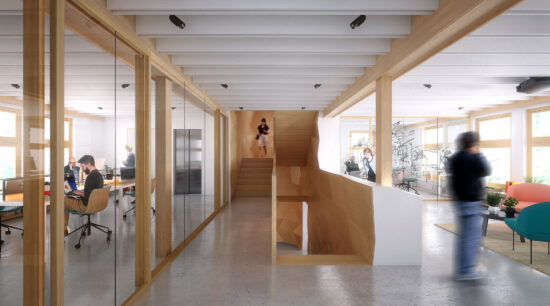
One Control System
Besides controlling all window automation, the WindowMaster, NV Advance® system, will also control the sun screening and underfloor heating and cooling throughout the building. With full integration of all control systems in the building management system, highly efficient and easy operations can be achieved.
Unique Control with NV Advance®
Before integrating NV Advance® for any building project, WindowMaster calculates wind pressure coefficients for all the automatic windows by simulating pressure distributions on the entire building. Collecting data from a wide range of wind directions, Computational Fluid Dynamic (CFD) analyses are completed to predict the turbulent flow field around the building. The surrounding buildings are also explicitly modeled and integrated into the analysis due to their significant impact on the local flow field. The calculated wind pressure coefficients are
used as parameters in the NV Advance® software and thus ensure the precise control of the individual window to create a comfortable and stable indoor climate. For HouseZero, an internal CFD analysis was carried out to determine the air flow in a room with single sided ventilation, and was used to determine if ventilation would cause drafts during the winter where the external temperature can reach as low as 8.6 °F / -13 °C.


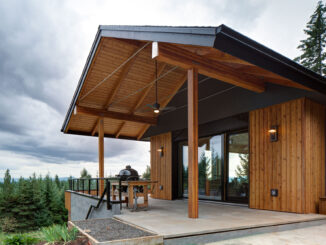

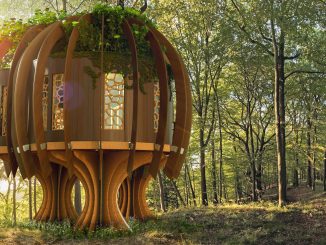
Be the first to comment